Stephen Robson | |
|---|---|
 | |
| Born | Stephen John Edward Robson 19 June 1956 |
| Nationality | British |
| Education | University of London |
| Known for | Printmaking, Drawing, Photography, Painting |
| Website | www |
Stephen Robson is a British artist and printmaker.
Stephen Robson | |
|---|---|
 | |
| Born | Stephen John Edward Robson 19 June 1956 |
| Nationality | British |
| Education | University of London |
| Known for | Printmaking, Drawing, Photography, Painting |
| Website | www |
Stephen Robson is a British artist and printmaker.
Stephen Robson was born in Cambridgeshire, England on 19 June 1956, where he lived until he went to study fine art at Goldsmiths College. After a successful career in photography, Stephen returned to drawing and printmaking, and studied printmaking. He is best known for his abstract depictions of English landscapes. [1] [2]
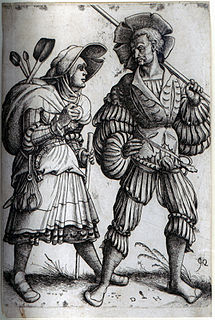
Etching is traditionally the process of using strong acid or mordant to cut into the unprotected parts of a metal surface to create a design in intaglio (incised) in the metal. In modern manufacturing, other chemicals may be used on other types of material. As a method of printmaking, it is, along with engraving, the most important technique for old master prints, and remains in wide use today. In a number of modern variants such as microfabrication etching and photochemical milling it is a crucial technique in much modern technology, including circuit boards.

Printmaking is the process of creating artworks by printing, normally on paper, but also on fabric, wood, metal, and other surfaces. "Traditional printmaking" normally covers only the process of creating prints using a hand processed technique, rather than a photographic reproduction of a visual artwork which would be printed using an electronic machine ; however, there is some cross-over between traditional and digital printmaking, including risograph. Except in the case of monotyping, all printmaking processes have the capacity to produce identical multiples of the same artwork, which is called a print. Each print produced is considered an "original" work of art, and is correctly referred to as an "impression", not a "copy". However, impressions can vary considerably, whether intentionally or not. Master printmakers are technicians who are capable of printing identical "impressions" by hand. Historically, many printed images were created as a preparatory study, such as a drawing. A print that copies another work of art, especially a painting, is known as a "reproductive print".

Linocut, also known as lino print, lino printing or linoleum art, is a printmaking technique, a variant of woodcut in which a sheet of linoleum is used for a relief surface. A design is cut into the linoleum surface with a sharp knife, V-shaped chisel or gouge, with the raised (uncarved) areas representing a reversal of the parts to show printed. The linoleum sheet is inked with a roller, and then impressed onto paper or fabric. The actual printing can be done by hand or with a printing press.
Graham Vivian Sutherland was a prolific English artist. Notable for his paintings of abstract landscapes and for his portraits of public figures, Sutherland also worked in other media, including printmaking, tapestry and glass design.

Sir Francis Job "Frank" Short PPRE was a British printmaker and teacher of printmaking. He revived the practices of mezzotint and pure aquatint, while expanding the expressive power of line in drypoint, etching and engraving. Short also wrote about printmaking to educate a wider public and was President of the Royal Society of Painter Etcher & Engavers from 1910 to 1938. He was a member of the Art Workers' Guild and was elected Master in 1901.

Intaglio is the family of printing and printmaking techniques in which the image is incised into a surface and the incised line or sunken area holds the ink. It is the direct opposite of a relief print where the parts of the matrix that make the image stand above the main surface.
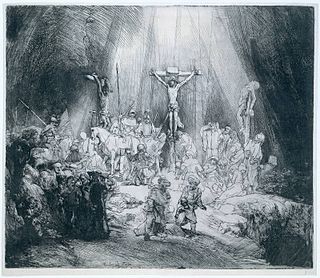
An old master print is a work of art produced by a printing process within the Western tradition. The term remains current in the art trade, and there is no easy alternative in English to distinguish the works of "fine art" produced in printmaking from the vast range of decorative, utilitarian and popular prints that grew rapidly alongside the artistic print from the 15th century onwards. Fifteenth-century prints are sufficiently rare that they are classed as old master prints even if they are of crude or merely workmanlike artistic quality. A date of about 1830 is usually taken as marking the end of the period whose prints are covered by this term.
William Michael Rothenstein was a British printmaker, painter and art teacher.

Krishna Reddy was an Indian master printmaker, sculptor, and teacher. He was considered a master intaglio printer and known for viscosity printing.
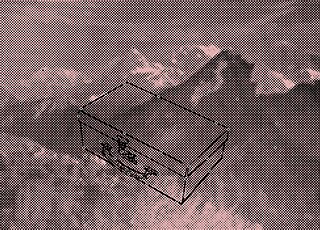
Paul V Coldwell is an English artist.
Raymond John "Jack" Coutu ARE ARCA was an English printmaker, sculptor, etcher, engraver, carver, watercolourist and teacher. He was influenced by Oriental art.
The London-based Printmakers Council, founded in 1965, aims to promote the art of printmaking and the work of contemporary printmakers. Their office is situated in Bermondsey, London. Membership is open to artists, students and interested individuals as friends.

Somnath Hore (1921-2006) was an Indian sculptor and printmaker. His sketches, sculptures and prints were a reaction to major historical crises and events of 20th century Bengal, such as the Bengal Famine of 1943 and the Tebhaga movement. He was a recipient of the Indian civilian honour of the Padma Bhushan.
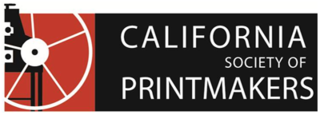
The California Society of Printmakers (CSP) is the oldest continuously operating association of printmakers and friends of printmakers in the United States. CSP is a non-profit arts organization with an international membership of print artists and supporters of the art of fine printmaking. CSP promotes professional development and opportunity for printmakers, and educates artists and the public about printmaking. New members are admitted by portfolio review. Friends, Institutional and Business members are admitted by fee. CSP is based in the San Francisco Bay Area, California.
Glasgow Print Studio is an arts organisation situated in Glasgow, Scotland. Founded in 1972, Glasgow Print Studio is an organisation with charitable status that exists to encourage and promote the art of printmaking; it is supported by the Creative Scotland and Glasgow City Council.

Frank Morley Fletcher (1866–1949), often referred to as F. Morley Fletcher, was a British painter and printmaker known primarily for his role in introducing Japanese colored woodcut printing as an important genre in Western art.
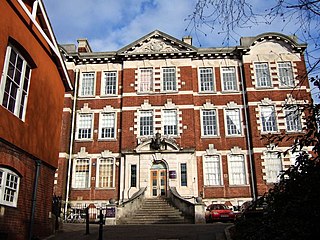
Exeter College of Art and Design was an art college based in Exeter, Devon. Founded in 1854, it amalgamated with what would become Plymouth University in 1989.
The Outlaws of Printmaking, also known as "The Outlaws" and "Outlaw Printmakers" are a collective of printmaking artists that exists internationally. The idea of "Outlaw Printmakers" formed from a show in New York at Big Cat Gallery in 2000. Tony Fitzpatrick, the owner of the Big Cat Press which is associated with the gallery, decided to call a show there "Outlaw Printmaking" to reflect attitudes of the printmakers involved in a non-academic approach to prints. As pointed out by Sean Starwars, the Southern Graphic Council print conference was happening at the same time as that show in NYC across the water in New Jersey. A handful of artists from the conference attended the show.). At that conference the core group now known as the Outlaw Printmakers formed, adopting the name from the show and continuing their own events, happenings and shows outside of the academic norm. The core members are Bill Fick, Tom Huck, The Hancock Brothers, Sean Star Wars, Dennis McNett and Cannonball Press. Many of the core artists associated with the movement cite the printmaker/artist Richard Mock as a primary influence. Mock's political and social narrative prints appeared in the New York Times op-ed pages for more than a decade in the 1980s and early 1990s. Later the group grew to include Carlos Hernandez, Drive By Press, Ryan O'Malley, Artemio Rodriguez, Kathryn Polk, Erica Walker, Derrick Riley, and Julia Curran.
Anne Desmet is a British artist who specializes in wood engravings, linocuts and mixed media collages. She has had three major museum retrospectives, received over 30 international awards, and her work is in museum collections and publications worldwide.

Edinburgh Printmakers is a printmaking studio and gallery in Edinburgh, Scotland. It has played a key role in the careers of Alan Davie, John Bellany, Carol Rhodes and Kate Downie.